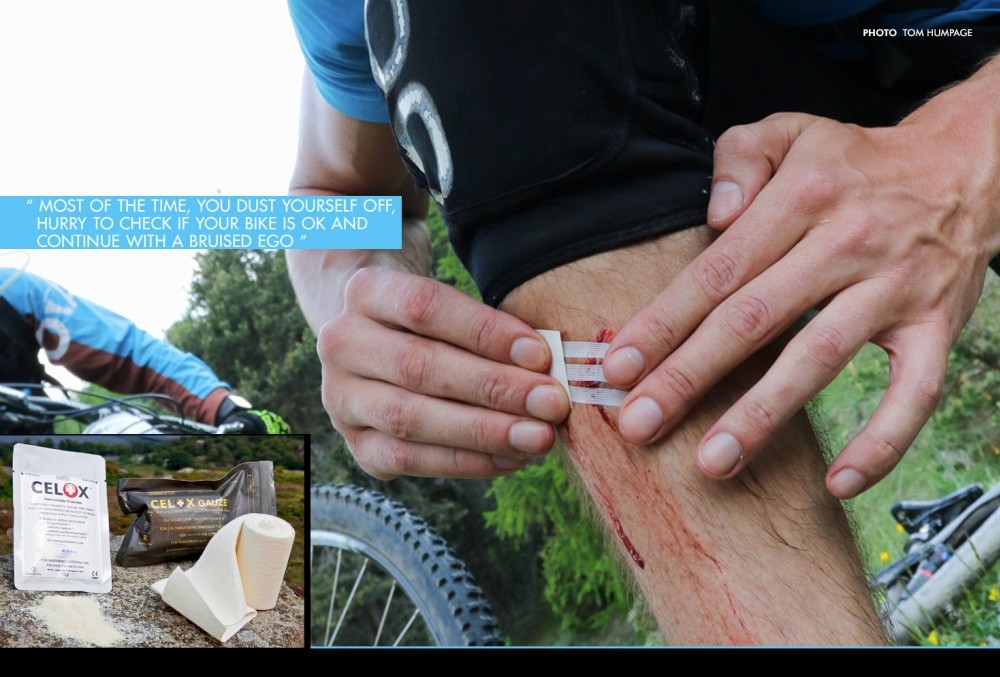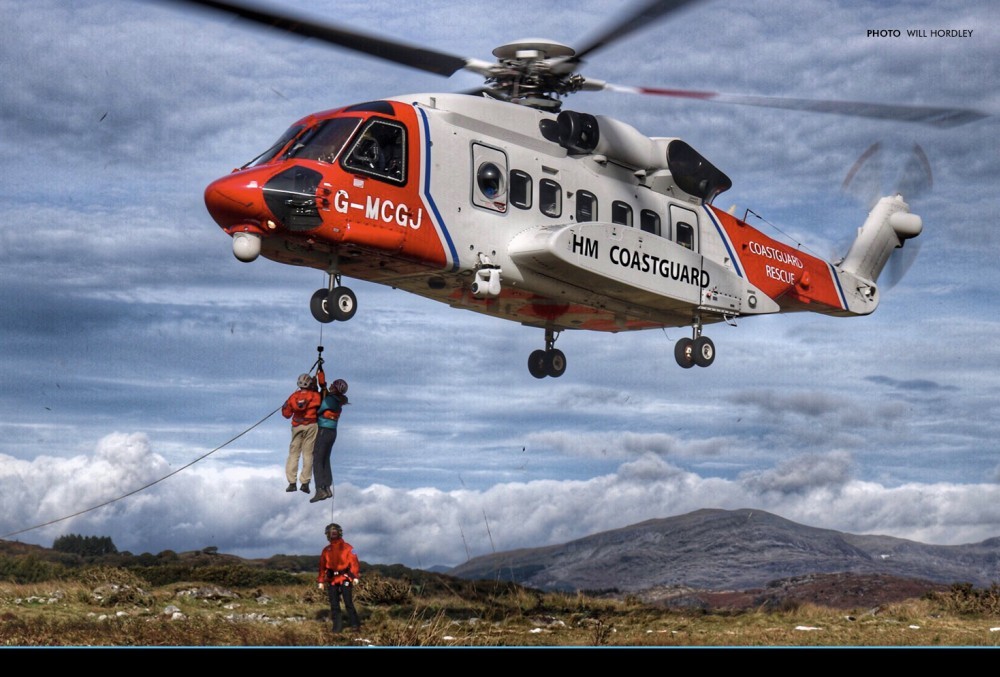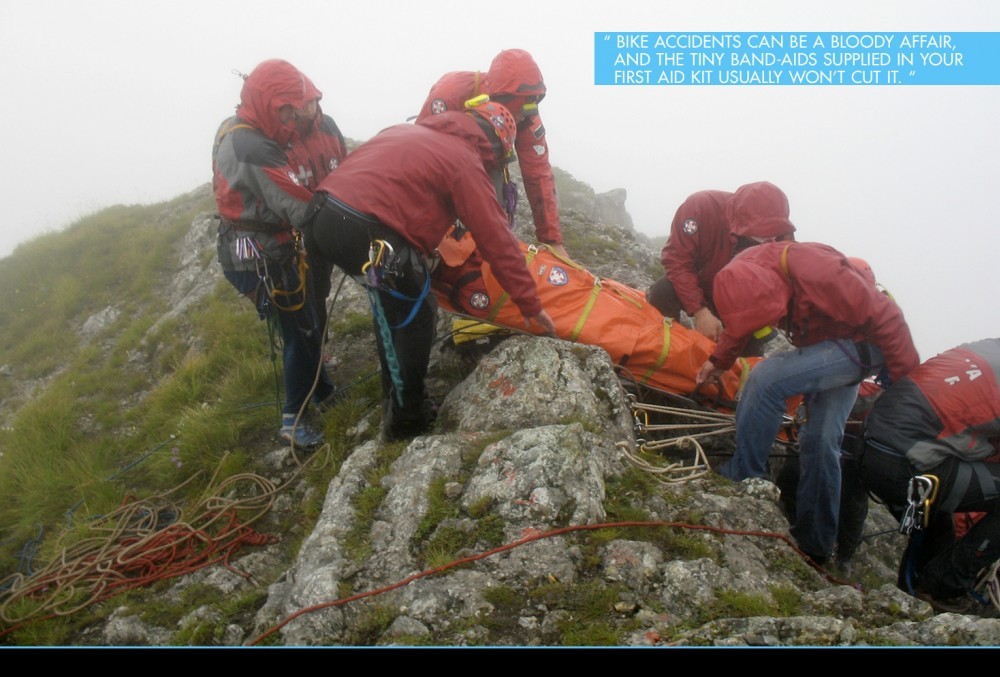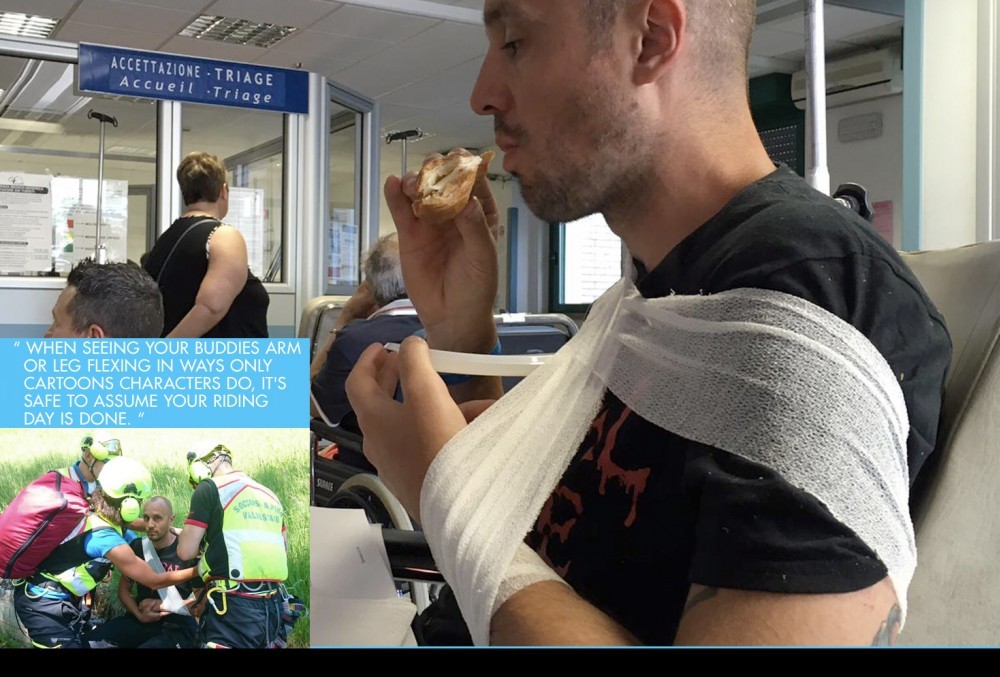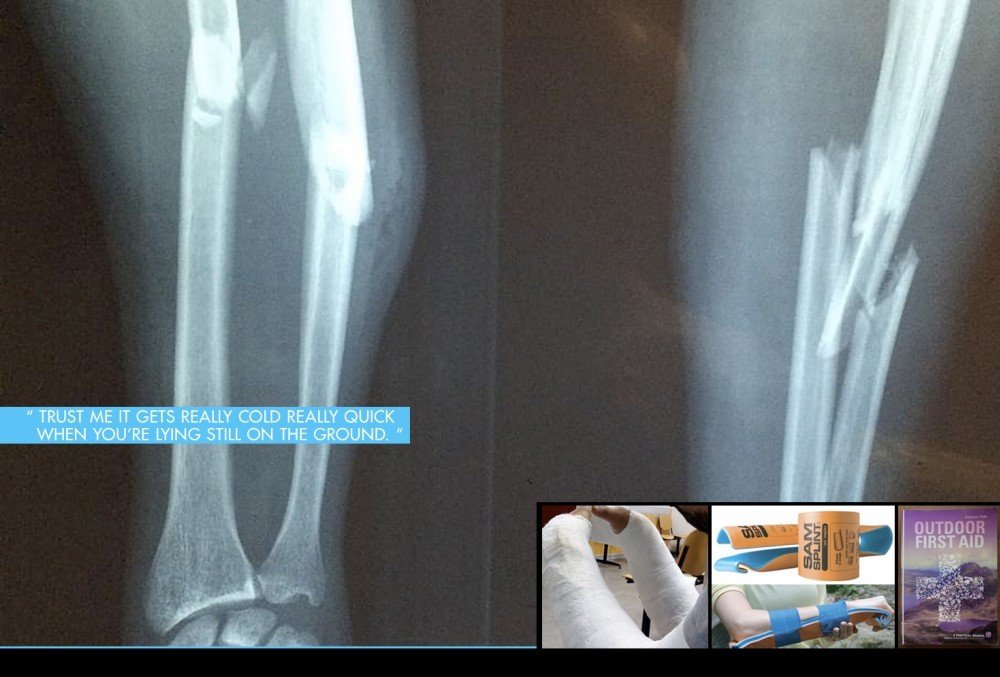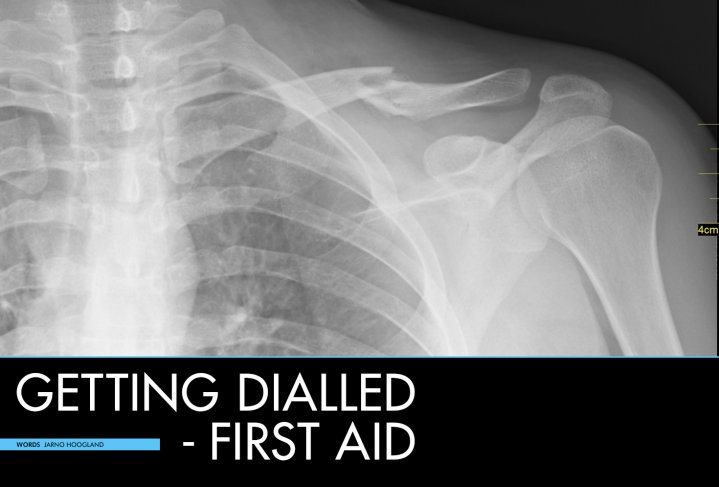
Getting Dialled - The First Aid Kit
Issue 64 / Wed 7th Apr, 2021
Easy to forget, hardly ever used but oh so important once the rubber side goes up. We have a look at how to improve your first aid kit with some handy products you probably never heard of.
We’ve all been there at some point in our lives. Razzin’ down a trail, in full control and having a smashing day out until…BAM! You come to a dead stop after seeing a sequence of sky, ground, sky, ground, sky as you do an involuntary soil inspection. Most of the time, you dust yourself off, hurry to check if your bike is ok and continue with a bruised ego hoping there were no witnesses of your tumble.
Every now and then, however, things have a slightly different ending and you find yourself or one of your riding buddies in a situation where there are more things bruised and broken than just the ego. At that point, having first aid training can be really helpful, and even potentially life-saving. Of course, this article is by no means a replacement for proper first aid training, but we do want to help you dial in your first aid kit to suit the needs of a mountain biker. Because the “off the shelf” stuff that’s out there can leave you struggling for solutions when things get serious.
First of all, make sure your kit bag is waterproof, or carry it in a dry bag. Pouring rain shouldn’t affect your first aid kit. Make sure the bag is a bright colour too, so it’s easy to find in case of an emergency. Mountain bike crashes are usually high-speed tumbles that result in gashes and flesh wounds or low-speed stacks with high force impacts. The high force impacts tend to lead to torn ligaments, fractured bones or dislocated joints. While the high-speed get-offs generally have open wounds nicely filled with dirt and sand as a result.
One of the first things you should do, after checking for any other imminent danger and confirming the casualty is conscious and breathing is to stop the bleeding. Bike accidents can be a bloody affair, and the tiny band-aids supplied in your first aid kit usually won’t cut it. One of the trusted items in my kit is a ready to go compression bandage known as ‘the Israeli bandage’.
A military favourite in situations where soldiers get wounded by explosives and shrapnel, it's 4’’, 8’’ or 12’’ wide and has an integrated compression strap to apply pressure to the wound to stop bleeding. As landmines are a rare encounter out on the singletracks, the 4’’ version will do the trick for mountain bikers. Even if I’m not taking my full First Aid kit, I make sure I have one of these in my (hip) bag. Another product that might be handy to keep in your pack is Celox. This powder is designed to clot the blood within 30 seconds by using natural enzymes. Although it’s unlikely you’ll ever need to use these, having them in your pack can save the day when things turn ‘Tarantino’.
Sometimes the scrapes are fairly big but don’t require something extreme like the Israeli bandage. In that case, you want to be able to wrap up the wound to stop any dirt and small furry animals from creeping in before you continue riding. A cheap, easy and effective method for this I found is clingfilm. Yup, the stuff your mom used to wrap your sandwiches in.
Cut a roll in half and keep it in your pack. Once done shredding the gnar for the day you can take it off and do a proper clean and bandage. Make sure to always properly clean your scrapes and wounds, even the smaller ones. Mountain biking takes you to dirty, bacteria-filled places and infection can lead to serious health issues, not to mention more time off the bike.
In case of a fracture or dislocation, things are a bit more tricky. When seeing your buddies arm or leg flexing in ways only cartoons characters do, it's safe to assume your riding day is done. In this case, you’re better off focussing on stabilizing, and setting up a rescue operation by mountain rescue. Make sure the unlucky one is comfortable and especially stays warm.
In some situations staying where you are isn’t an option. If you’ve paid attention when at the first aid course you can consider making a splint to stabilize the floppy limb to prevent further damage. You can get creative with sticks and branches, but the SAM Splint and some medical tape will do a better job. It is made of a bendable aluminium core, covered in foam. Reusable and easy to pack it can be a great addition to your kit, especially if you ride in remote areas or in places where you don’t easily find sticks.
Some other key tools I keep in the first aid kit are:
Paramedic Scissors
10x10cm Sterile compresses
Medical tape
Steri strips (to tape cut wounds together that stitches)
Disinfectant spray like Betadine antiseptic
Depending on where you ride, you can add things like tick removal tweezers, insect sting treatment, medical gloves (also handy for working on dirty drivetrain fixes), notepad and pen to be able to write down vital stats and last but not least an insulation blanket. Trust me it gets really cold really quick when you’re lying still on the ground.
Well, I honestly hope writing this was a big waste of time, and none of us ever need to use the information I just shared. Of course, we’d like to hear from you what you shouldn't forget in your first aid kit, so drop us a DM on Facebook or tag us in your post.
Just in case you want to improve your first aid skills a bit more, you can always sign up for a First Aid course (or Outdoor First Aid course) to get some hands on experience. A great reference guide is Katherine Wills’ book ‘Outdoor First Aid’. It doesn’t by any means replace a course, but is great to have on your bookshelves to refresh your memory. You can buy this straight from the publisher.
Links:
Israeli 4’’ bandage with pressure bar
https://israelifirstaid.com/4-israeli-bandage-with-pressure-bar/
Celox Hemostatic granules
https://israelifirstaid.com/celox-15gr-packet-haemostatic-granules-fda-ce/
Sam Splint
https://israelifirstaid.com/sam-splint-36-inch-roll-orange-blue-charcoal/
Outdoor First Aid by Katherine Wills
https://www.pesdapress.com/index.php/product/outdoor-first-aid/#reviews
By Jarno Hoogland
Jarno's life has revolved around two wheels ever since he swung a leg over his first BMX at age 4. After a BMX and DH racing career, he moved on to work for bike shops, distributors and brands before ending up in the editors seat at IMB. Based in the ultimate testing ground in the Swiss mountains, he runs his guiding operation and makes sure every IMB issue is filled with top notch content.




